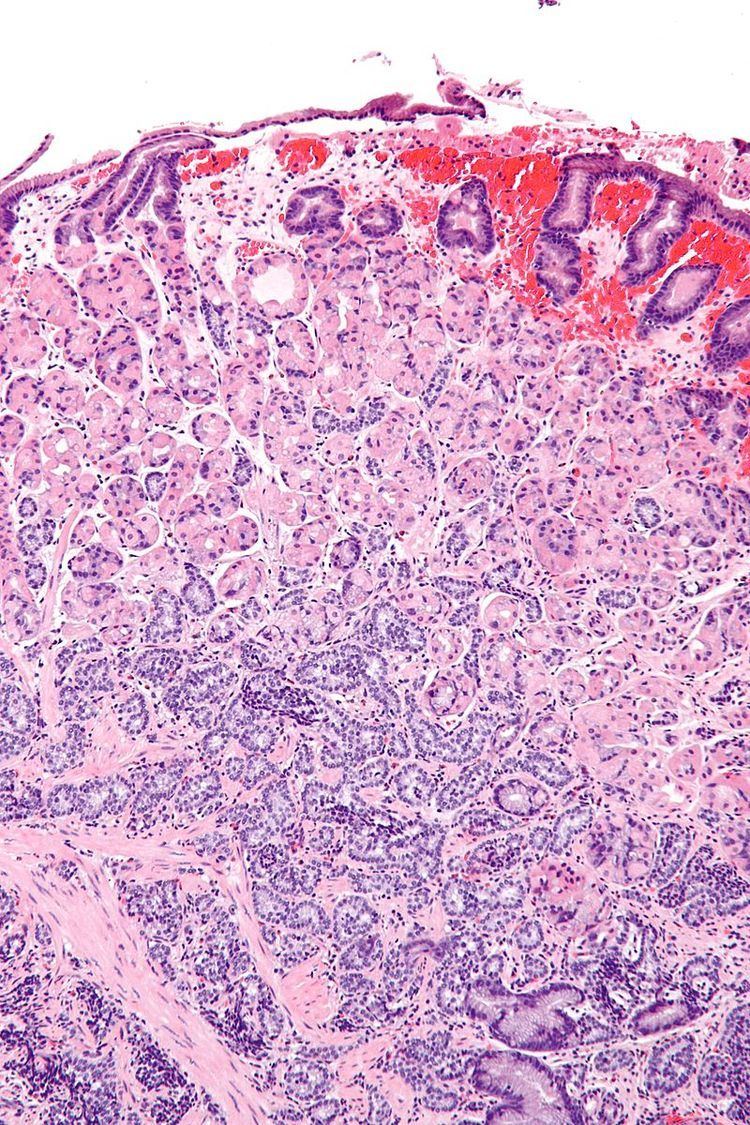Specialty oncology DiseasesDB 14279 MeSH D015408 | ICD-O M8153/1 eMedicine med/2678 | |
 | ||
A gastrinoma is a tumor in the pancreas or duodenum that secretes excess of gastrin leading to ulceration in the duodenum, stomach and the small intestine. There is hypersecretion of the HCl acid into the duodenum, which causes the ulcers. Excessive HCl acid production also causes hyperperistalsis, and inhibits the activity of lipase, causing severe diarrhea.
Contents
It is frequently the source of the gastrin in Zollinger-Ellison syndrome.
It is usually found in the duodenum, although it may arise in the stomach or pancreas. Those occurring in the pancreas have a greater potential for malignancy. Most gastrinomas are found in the gastrinoma triangle; this is bound by the junction of cystic and common bile ducts, junction of the second and third parts of the duodenum, and the junction of the neck and body of the pancreas.
Signs and symptoms
Gastrinoma causes the following symptoms:
Diagnostics
Treatment
Treatment can involve surgery or proton pump inhibitors.
